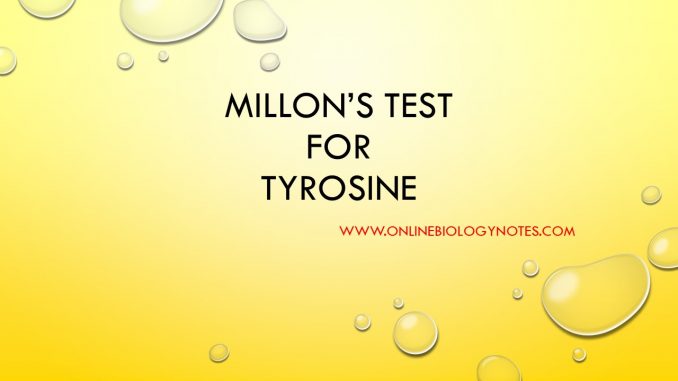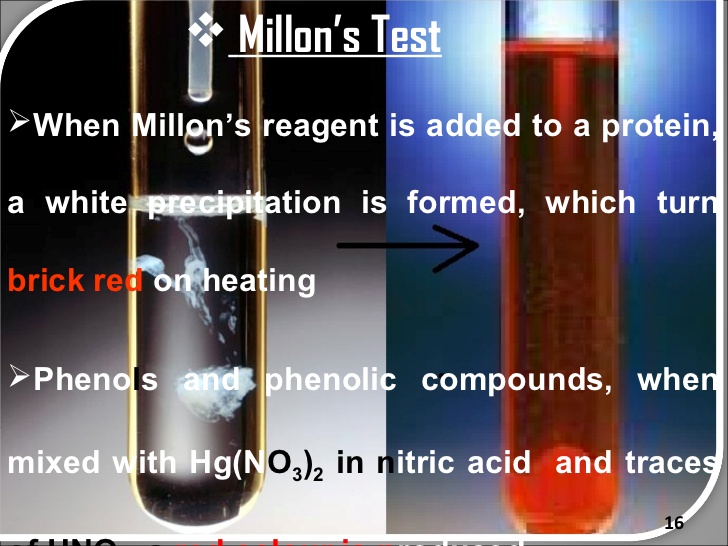
Millon’s test: Objective, Principle, Reagents, Procedure and Result
Objective:
- to detect amino acid containing phenol group (hydroxyl group attached to benzene ring) ie. Tyrosine
Principle of Millon’s test:
Compounds containing hydroxybenzene radical react with Millon’s reagent to form red complexes. The only amino acid having hydroxybenzene ring is tyrosine. Thus, this test is specific for the amino acid tyrosine and the protein containing this amino acid. Tyrosine when reacted with acidified mercuric sulphate solution gives yellow precipitate of mercury-amino acid complex. On addition of sodioum nitrate solution and heating, the yellow complex of mercury-amino acid complex converts to mercury phenolate which is in red color.
Reagents:
- test solution: 1 % arginine, 1 % tyrosine, phenol solution
- Millon’s reagent (Acidified mercuric sulphate)
- 1 % sodium nitrite
Procedure of Millon’s test:
- Take 1ml test solution in dry test tube.
- Similarly, take 1ml distilled water in another test tube as control.
- Add 1ml of Millon’s reagent and mix well.
- Boil gently for 1 minute.
- Cool under tap water.
- Now add 5 drops of 1 % sodium nitrite.
- Heat the solution slightly.
- Look for the development of brick red precipitate.
Result interpretation:
- Positive Millon’s test: Brick red color (Tyrosine and phenol solution)
- Negative Millon’s test: no red color ( arginine)
**all phenol give positive Millon’s test

Millon’s test: Objective, Principle, Reagents, Procedure and Result
